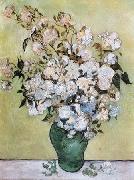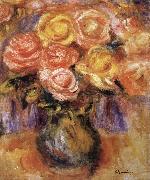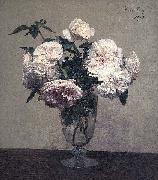Wholesale Oil Painting No Minimum |
|||||||||||
|
|
|||||||||||

|
|||||||||||
|
|
|
||||||||
Vincent Van GoghDutch Post-Impressionist Painter, 1853-1890 Vincent Willem van Gogh (30 March 1853 ?C 29 July 1890) was a Dutch Post-Impressionist artist. Some of his paintings are now among the world's best known, most popular and expensive works of art. Van Gogh spent his early adult life working for a firm of art dealers. After a brief spell as a teacher, he became a missionary worker in a very poor mining region. He did not embark upon a career as an artist until 1880. Initially, Van Gogh worked only with sombre colours, until he encountered Impressionism and Neo-Impressionism in Paris. He incorporated their brighter colours and style of painting into a uniquely recognizable style, which was fully developed during the time he spent at Arles, France. He produced more than 2,000 works, including around 900 paintings and 1,100 drawings and sketches, during the last ten years of his life. Most of his best-known works were produced in the final two years of his life, during which time he cut off part of his left ear following a breakdown in his friendship with Paul Gauguin. After this he suffered recurrent bouts of mental illness, which led to his suicide. The central figure in Van Gogh's life was his brother Theo, who continually and selflessly provided financial support. Their lifelong friendship is documented in numerous letters they exchanged from August 1872 onwards. Van Gogh is a pioneer of what came to be known as Expressionism. He had an enormous influence on 20th century art, especially on the Fauves and German Expressionists. |
||||||||
|
|
||||||||
Vase of Roses
Vase of Roses Painting ID:: 1998 |
May 1890
92.6 x 73.7cm
Private Collection
May 1890 92.6 x 73.7cm Private Collection |
|||||||
|
|
||||||||
Pierre RenoirFrench Impressionist Painter, 1841-1919 Pierre-Auguste Renoir (February 25, 1841?CDecember 3, 1919) was a French artist who was a leading painter in the development of the Impressionist style. As a celebrator of beauty, and especially feminine sensuality, it has been said that "Renoir is the final representative of a tradition which runs directly from Rubens to Watteau". Renoir's paintings are notable for their vibrant light and saturated color, most often focusing on people in intimate and candid compositions. The female nude was one of his primary subjects. In characteristic Impressionist style, Renoir suggested the details of a scene through freely brushed touches of color, so that his figures softly fuse with one another and their surroundings. His initial paintings show the influence of the colorism of Eugene Delacroix and the luminosity of Camille Corot. He also admired the realism of Gustave Courbet and Edouard Manet, and his early work resembles theirs in his use of black as a color. As well, Renoir admired Edgar Degas' sense of movement. Another painter Renoir greatly admired was the 18th century master François Boucher. A fine example of Renoir's early work, and evidence of the influence of Courbet's realism, is Diana, 1867. Ostensibly a mythological subject, the painting is a naturalistic studio work, the figure carefully observed, solidly modeled, and superimposed upon a contrived landscape. If the work is still a 'student' piece, already Renoir's heightened personal response to female sensuality is present. The model was Lise Tr??hot, then the artist's mistress and inspiration for a number of paintings. In the late 1860s, through the practice of painting light and water en plein air (in the open air), he and his friend Claude Monet discovered that the color of shadows is not brown or black, but the reflected color of the objects surrounding them. Several pairs of paintings exist in which Renoir and Monet, working side-by-side, depicted the same scenes (La Grenouill??re, 1869). One of the best known Impressionist works is Renoir's 1876 Dance at Le Moulin de la Galette (Le Bal au Moulin de la Galette). The painting depicts an open-air scene, crowded with people, at a popular dance garden on the Butte Montmartre, close to where he lived. On the Terrace, oil on canvas, 1881, Art Institute of ChicagoThe works of his early maturity were typically Impressionist snapshots of real life, full of sparkling colour and light. By the mid 1880s, however, he had broken with the movement to apply a more disciplined, formal technique to portraits and figure paintings, particularly of women, such as The Bathers, which was created during 1884-87. It was a trip to Italy in 1881, when he saw works by Raphael and other Renaissance masters, that convinced him that he was on the wrong path, and for the next several years he painted in a more severe style, in an attempt to return to classicism. This is sometimes called his "Ingres period", as he concentrated on his drawing and emphasized the outlines of figures. After 1890, however, he changed direction again, returning to the use of thinly brushed color which dissolved outlines as in his earlier work. From this period onward he concentrated especially on monumental nudes and domestic scenes, fine examples of which are Girls at the Piano, 1892, and Grandes Baigneuses, 1918-19. The latter painting is the most typical and successful of Renoir's late, abundantly fleshed nudes. A prolific artist, he made several thousand paintings. The warm sensuality of Renoir's style made his paintings some of the most well-known and frequently-reproduced works in the history of art.. |
||||||||
|
|
||||||||
|
|
Vase of Roses
Vase of Roses Painting ID:: 30191 |
mk64
1919
Oil on canvas
37x31.5cm
Paris,Galerie Tamenaga
mk64 1919 Oil on canvas 37x31.5cm Paris,Galerie Tamenaga |
||||||
|
|
||||||||
Henri Fantin-LatourFrench 1836-1904 Henri Fantin Latour Locations Bure) French painter and printmaker. He was trained by his father, a portrait painter, and at the Ecole des Beaux-Arts. Though he associated with progressive artists (Gustave Courbet, Eugene Delacroix, Edouard Manet), he was a traditionalist best known for his portraits and still lifes with flowers. His portrait groups, reminiscent of 17th-century Dutch guild portraits, depict literary and artistic persons of the time; his flower paintings were especially popular in England, thanks to James McNeill Whistler and John Everett Millais, who found patrons to support him. His later years were devoted to lithography. |
||||||||
|
|
||||||||
|
|
Vase of Roses
Vase of Roses Painting ID:: 58785 |
Vase of Roses,
1875.
Vase of Roses, 1875. |
||||||
|
|
||||||||
|
Henri Fantin-Latour French 1836-1904 Henri Fantin Latour Locations Bure) French painter and printmaker. He was trained by his father, a portrait painter, and at the Ecole des Beaux-Arts. Though he associated with progressive artists (Gustave Courbet, Eugene Delacroix, Edouard Manet), he was a traditionalist best known for his portraits and still lifes with flowers. His portrait groups, reminiscent of 17th-century Dutch guild portraits, depict literary and artistic persons of the time; his flower paintings were especially popular in England, thanks to James McNeill Whistler and John Everett Millais, who found patrons to support him. His later years were devoted to lithography. Vase of Roses Vase of Roses, 1875. |
||||||||
|
|
||||||||
|
Prev Next
|
||||||||
|
|
||||||||
|
Related Paintings to Henri Fantin-Latour :. |
||||||||
|
|
||||||||
|
CONTACT US |



